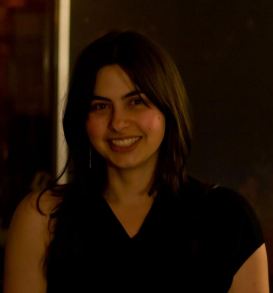Women Who Submit: Where does the San Francisco chapter meet?
Dominica Phetteplace: Our chapter meets every other month at Borderlands Café in the Mission District of San Francisco, which is adjacent to Borderlands Bookstore, one of my favorite independent bookstores in the world. Borderlands Bookstore specializes in Science Fiction, Fantasy, and Mystery fiction. They also have a great magazine section with lots of cool literary journals for sale. I draw a lot of inspiration from this place. The café has been very supportive of our mission. They set aside tables just for us! Look for us in the back, we’re the group of hardworking women with laptops.
WWS: What are your members like?
DP: We have members writing in almost every single genre: speculative, literary, poetry, non-fiction, memoir, YA and more. Some are trying to find homes for their short stories, poems, collections or novels. Others are pitching articles. Some (like me!) are applying for fellowships and residencies. All of us are trying to find the best opportunities for ourselves while sharing the wisdom we’ve acquired with others.
We are also extremely welcoming to beginners and newcomers. We have our regulars, but we really enjoy meeting new people too! Our chapter welcomes any writer who identifies as a woman or non-binary.
WWS: What can people expect to find at a WWS-San Francisco submission party?
DP: Lots of tea and brainstorming! Equal parts working on our stuff and checking in with other people on where they are. Anytime someone gets a submission in, we ring the bell and everyone claps.
WWS: What personal experiences are you hoping to bring to the table as the chapter co-lead?
DP: My co-lead, Erin Cashier, publishes novels traditionally through a major publisher. She publishes short fiction in professional markets (defined as those that pay six cents a word or more). She also self-publishes. Erin writes speculative fiction and romance/erotica under a couple of pseudonyms. I publish short fiction in professional markets. I write science fiction and literary fiction. Poetry too.
Both of us are very open about our processes. Erin will show you how she tracks her sales or explains her marketing plan. She knows a lot about promotion. She’s accomplished a lot, but she’s had to be very persistent to get where she is.
I just celebrated the fifth anniversary of my first publication, a short story in Asimov’s. For science fiction, my goal is to place stories in top-tier professional markets, like Asimov’s, F&SF and Clarkesworld. I’m also on the lookout for reprint opportunities. Reprints are great because it’s a chance to get paid a second time for something you’ve already published.
For literary fiction, I use Clifford Garstang’s ranking of Pushcart Prize-winning journals. I go down the list in order, but I skip markets that charge submission fees. I don’t pay submissions fees. This is a method that works for me. I won a Pushcart Prize this year and you can find my work in the Pushcart Prize XLI Anthology.
For poetry, I only submit to fee-free markets that pay. I use Trish Hopkinson’s list of paying poetry markets.
I encourage every writer who comes to our meetings to think about where they want to be published and why. Every writer needs to set their own standards for where they want their work to appear. Badly published is worse than not at all published. It feels great to get an acceptance, but don’t automatically say yes to everything. Read your contract!
WWS: Do you have any submission success stories to share?
DP: Yes! One of our members, Jennifer Hasegawa, published two poems she submitted during one of our meetups at Tule Review. A couple of our science fiction writing members have sold stories to reprint markets they researched during our meetings. I have a poem in the September issue of Grasslimb Journal that I submitted during a meeting. And anyone who is brave enough to show up and ring our bell is a success story in my opinion.

Dominica Phetteplace is a math tutor who writes fiction and poetry. She has been awarded a Pushcart Prize and fellowships from I-Park, the Deming Fund, and the MacDowell Colony.

